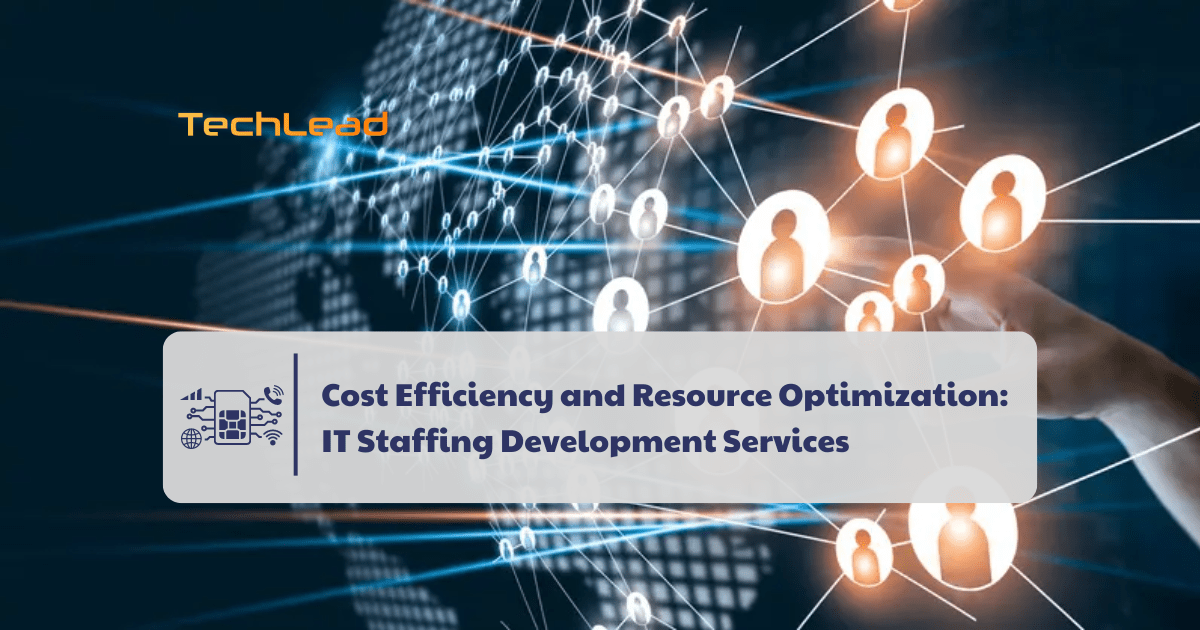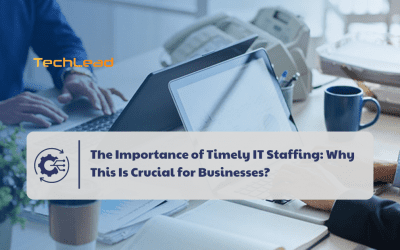In the rapid development of the information technology industry, IT Staffing resources have become a key factor to maintain competitiveness in the digital world. Therefore, optimizing resources and reducing costs in developing IT Staffing is extremely important.
What is IT Staffing Development Services?
1. Definition of IT Staffing Development Services
Definition of IT Staffing Development Services (Collected)
IT Staffing development services encompass a range of solutions designed to recruit, train, and manage IT Staffing efficiently. These services can include everything from hiring and onboarding new talent to providing continuous education and skills development for existing employees. Companies may also leverage outsourcing or offshore development services to tap into a global pool of IT expertise. By utilizing these specialized services, businesses can ensure that their IT teams are well-equipped with the latest technical knowledge and best practices, thereby enhancing overall organizational performance.
2. Benefits of IT Staffing Development Services
- Cost Savings in Recruitment and Training

Cost Savings in Recruitment and Training (Collected)
One of the primary advantages of IT Staffing development services is the significant reduction in recruitment and training costs. Traditional recruitment processes can be time-consuming and expensive, often involving extensive advertising, interviewing, and onboarding activities. Specialized service providers streamline this process by leveraging their extensive networks and industry knowledge to identify and hire top talent swiftly and efficiently. Additionally, these providers offer tailored training programs that are both comprehensive and up-to-date, reducing the need for companies to invest heavily in internal training infrastructure and resources.
-
Enhanced Work Efficiency and Productivity
IT Staffing development services also play a crucial role in boosting work efficiency and productivity. By ensuring that IT Staffing receive continuous training and development, companies can keep their teams abreast of the latest technologies and methodologies. This ongoing professional development helps to minimize skills gaps and ensures that employees are proficient in the tools and technologies they need to perform their roles effectively. Furthermore, by outsourcing certain IT functions or leveraging offshore development teams, businesses can operate around the clock, thereby accelerating project timelines and improving overall productivity.
-
Optimization of Processes and Resources
Optimizing processes and resources is another key benefit of IT Staffing development services. These services enable businesses to manage their IT Staffing resources more strategically, ensuring that the right skills are deployed at the right time for various projects. By utilizing managed services or consulting expertise, companies can streamline their IT operations, reduce downtime, and enhance the reliability and performance of their IT systems. This strategic management of IT Staffing resources not only improves operational efficiency but also allows companies to focus on their core business objectives, thereby driving long-term growth and competitiveness.
The Current State of Demand and Challenges in the IT Sector
In today’s rapidly evolving technological landscape, the IT sector faces both unprecedented opportunities and significant challenges. The demand for skilled IT Staffing is at an all-time high, driven by the relentless pace of digital transformation across industries. As businesses of all sizes increasingly rely on technology to remain competitive, the need for a highly qualified IT Staffing has become paramount. However, this heightened demand brings with it a host of challenges in recruiting and retaining top-tier talent. Intense competition, high recruitment and training costs, and the complexities of managing and developing internal talent are just a few of the hurdles that organizations must navigate. Understanding these dynamics is crucial for companies aiming to optimize their IT Staffing and maintain a competitive edge.
1. High Demand for Quality IT Staffing
High Demand for Quality IT Staffing (Collected)
The IT sector is experiencing an unprecedented demand for skilled professionals, driven by the rapid pace of technological advancements and digital transformation initiatives across industries. Companies are in dire need of IT Staffing proficient in areas such as cybersecurity, data science, cloud computing, and software development. This demand is not limited to large tech firms but extends to small and medium-sized enterprises (SMEs) that are increasingly adopting technology to stay competitive. The shortage of qualified IT Staffing has created a competitive job market where talent acquisition has become a critical challenge for many organizations. Consequently, businesses are striving to attract and retain top-tier IT Staffing to drive innovation and maintain operational efficiency.
2. Challenges in Recruiting and Retaining IT Staffing
Recruiting and retaining IT Staffing present significant challenges for organizations. The fierce competition for skilled IT Staffing means that companies often struggle to find candidates who meet their specific technical and experiential requirements. Moreover, the rapid evolution of technology necessitates continuous learning and skill development, adding another layer of complexity to the recruitment process. Retention is equally problematic, as highly skilled IT Staffing are frequently targeted by competing firms offering lucrative compensation packages, comprehensive benefits, and career advancement opportunities. This competitive landscape forces employers to constantly enhance their value proposition to prevent turnover and ensure long-term engagement of their IT staffing.
3. Intense Competition
The competition for IT Staffing is particularly intense, with tech giants and innovative startups vying for the same pool of skilled professionals. This competition is exacerbated by the global nature of the IT industry, where remote work and digital collaboration tools enable companies to recruit talent from anywhere in the world. As a result, local companies must compete not only with domestic rivals but also with international firms that may offer more attractive employment terms. This intense competition drives up salaries and benefits, making it increasingly difficult for smaller organizations to compete with well-funded tech giants.
4. High Recruitment and Training Costs
The costs associated with recruiting and training IT Staffing are substantial. Traditional recruitment methods, such as job advertisements, recruitment agencies, and headhunting, can be expensive and time-consuming. Additionally, the need to verify technical skills and cultural fit often requires multiple rounds of interviews and assessments, further driving up costs. Once hired, new employees typically require extensive training to get up to speed with company-specific technologies, processes, and methodologies. This initial investment in onboarding and training can be significant, particularly for highly specialized roles that demand deep technical knowledge and expertise.
5. Challenges in Managing and Developing Internal Talent
Managing and developing internal IT Staffing poses its own set of challenges. As technology evolves, organizations must continuously invest in upskilling their workforce to keep pace with new developments and maintain competitive advantage. This requires a strategic approach to talent management, including ongoing training programs, career development plans, and performance management systems. However, many companies struggle to provide sufficient opportunities for professional growth and development, leading to employee dissatisfaction and turnover. Moreover, the dynamic nature of the IT industry means that managers must constantly adapt their strategies to align with changing technological trends and business needs. This ongoing cycle of adaptation and improvement places considerable strain on organizational resources and can impede long-term growth and stability.
In conclusion, the IT sector’s burgeoning demand for skilled professionals underscores the critical importance of effective talent management strategies. Organizations must navigate a complex landscape marked by intense competition and high recruitment and training costs, all while striving to manage and develop their internal workforce effectively. By addressing these challenges head-on and implementing robust strategies for attracting, retaining, and nurturing IT Staffing, businesses can not only meet their immediate needs but also position themselves for sustained success in an increasingly digital world. Embracing continuous learning, fostering a supportive work environment, and leveraging innovative recruitment practices are essential steps toward achieving these goals and ensuring long-term growth and stability in the IT sector.
How IT Staffing resources development services help save costs
In today’s competitive business environment, optimizing resources and reducing costs are critical for organizations striving to maintain a competitive edge. IT staffing services offer a strategic approach to manage human resources effectively, providing businesses with the flexibility and expertise needed to thrive in the fast-paced technology sector. This article explores how IT staffing services can significantly contribute to cost savings by streamlining recruitment processes, reducing training expenses, and lowering management and operational costs.
1. Reducing Recruitment Costs
Reducing Recruitment Costs (Collected)
IT staffing services can substantially lower recruitment expenses by leveraging their extensive networks and industry expertise. Traditional recruitment methods often involve high costs related to advertising, screening, and interviewing candidates. However, IT staffing firms possess a vast pool of pre-screened, qualified candidates, which accelerates the hiring process and reduces these overheads. Furthermore, their in-depth knowledge of the IT industry allows them to match candidates to roles more precisely, minimizing the risk of costly hiring mistakes and reducing the time and resources spent on repeated recruitment efforts.
Leveraging Networks and Expertise of Staffing Companies
By utilizing the networks and expertise of IT staffing companies, organizations can access a broader and more specialized talent pool. Staffing agencies are equipped with experienced recruiters who understand the nuances of the IT landscape, enabling them to identify and attract top-tier talent efficiently. This advantage translates into quicker and more effective recruitment processes, as these companies can swiftly navigate the job market and find the right candidates, thus ensuring that projects are staffed promptly and efficiently without compromising on quality.
Accelerating the Recruitment Process
The efficiency of IT staffing services lies in their ability to expedite the recruitment process. These firms employ streamlined methodologies and advanced tools to identify suitable candidates quickly. They conduct thorough background checks, skill assessments, and initial interviews, presenting only the most qualified candidates to the hiring organization. This not only saves time but also reduces the administrative burden on internal HR departments, allowing them to focus on strategic initiatives rather than the tedious aspects of recruitment.
2. Saving on Training Costs
Training new employees can be a significant financial burden, especially in the ever-evolving IT sector. IT staffing services help mitigate these costs by providing employees who already possess the necessary skills and expertise. Additionally, many staffing agencies offer customized training programs tailored to the specific needs of the client organization. This targeted approach ensures that employees are adequately prepared for their roles from the outset, reducing the time and resources required for onboarding and training.
Providing On-Demand Training and Specific Roadmaps
IT staffing services often include the provision of on-demand training that aligns with the specific requirements of the hiring organization. This ensures that employees receive relevant and timely training, which is crucial for maintaining high productivity and keeping up with technological advancements. By following a specific training roadmap, organizations can systematically enhance their employees’ skills, ensuring they remain competitive and capable of handling new challenges.
Keeping Up with Continuous Technological and Skill Updates
In the dynamic field of IT, staying updated with the latest technologies and skills is essential. IT staffing firms continuously invest in training and development programs to ensure their talent pool is proficient with current industry standards. By tapping into this pool, organizations benefit from having employees who are knowledgeable about the latest trends and technologies, thereby reducing the need for extensive and costly training programs.
3. Reducing Management and Operational Costs

Reducing Management and Operational Costs (Collected)
Outsourcing IT staffing services can lead to significant reductions in management and operational expenses. External staffing agencies handle many administrative tasks associated with employment, such as payroll, benefits administration, and compliance with labor laws. This not only reduces the workload on internal HR departments but also ensures compliance and accuracy, mitigating the risk of costly errors and legal issues.
Utilizing External Human Resource Management Services
By using external human resource management services provided by IT staffing agencies, companies can optimize their operational efficiency. These agencies take on the responsibility of managing employee relations, performance reviews, and other HR functions, allowing the organization to focus on its core business activities. This strategic delegation of HR tasks leads to a more streamlined and cost-effective operation.
Optimizing Administrative and Infrastructure Costs
IT staffing services also help in optimizing administrative and infrastructure costs. By providing remote or contract-based employees, these services eliminate the need for additional office space, equipment, and other infrastructure investments. This flexibility allows organizations to scale their workforce according to project needs without incurring substantial overhead costs, thus leading to more efficient use of resources.
In conclusion, IT staffing services play a crucial role in helping organizations save costs while optimizing their human resources. By reducing recruitment expenses, saving on training costs, and lowering management and operational expenditures, these services provide a comprehensive solution for efficient workforce management. Businesses can leverage the expertise and networks of IT staffing agencies to enhance their productivity and focus on their strategic goals, ensuring long-term success in the competitive IT industry.
Optimizing Resources through IT Staffing Services
In the realm of IT staffing, optimizing resources is not merely a goal but a necessity for sustained success in today’s dynamic market. Leveraging the expertise and experience of specialized teams is paramount in this endeavor.
1. Leveraging Expertise and Experience

Leveraging Expertise and Experience (Collected)
Harnessing the expertise and experience of IT staffing professionals can significantly enhance an organization’s capabilities. By partnering with reputable IT staffing firms, businesses gain access to a pool of skilled professionals who possess a deep understanding of the latest technologies and industry trends.
These experts not only bring technical prowess but also invaluable insights gleaned from years of hands-on experience. Whether it’s software development, cybersecurity, cloud computing, or data analytics, having access to seasoned professionals can elevate project outcomes and drive innovation.
2. Flexibility in Adjusting and Augmenting Staff
One of the key advantages of IT staffing services is the flexibility they offer in adjusting and augmenting staff as per the evolving needs of a project or organization. In today’s fast-paced IT landscape, demands can fluctuate rapidly, making it crucial for businesses to have the agility to scale their workforce up or down as required.
Through IT staffing services, companies can quickly onboard additional talent during peak periods or special projects, without the overhead of traditional hiring processes. Conversely, they can scale back when projects wind down, avoiding unnecessary costs associated with maintaining a permanent workforce.
3. Focus on Core Business Strategy and Development
By entrusting IT staffing needs to specialized service providers, organizations can redirect their focus towards core business strategies and development initiatives. Instead of allocating resources to the intricacies of recruitment, training, and HR management, businesses can concentrate on refining their products, services, and market positioning.
This strategic realignment enables companies to stay ahead of the competition by dedicating more time and resources to innovation, customer satisfaction, and revenue growth. It also fosters a culture of agility and adaptability, essential traits in today’s rapidly evolving business landscape.
In conclusion, IT staffing services offer a strategic advantage to organizations seeking to optimize their resources and achieve sustainable growth. By leveraging the expertise of seasoned professionals, adapting staffing levels as needed, and prioritizing core business strategies, companies can navigate the complexities of the IT landscape with confidence and efficiency. Embracing IT staffing as a strategic partner empowers businesses to stay agile, innovative, and competitive in an ever-changing market.
Selecting the Right IT Staffing Service
In today’s fast-paced technological landscape, businesses are increasingly reliant on skilled IT Staffing to drive innovation and maintain competitive advantage. However, finding and retaining top IT Staffing can be a daunting task, especially with the growing demand and intense competition in the industry. This is where IT staffing services come into play, offering a strategic solution to fulfill staffing needs efficiently and effectively. When it comes to selecting the most suitable IT staffing service for your organization, several key factors need to be carefully evaluated and considered.
1. Criteria for Evaluation and Selection
When evaluating and selecting an IT staffing service, three primary criteria should be taken into account: the reputation and experience of the service provider, the expertise and quality of their team of professionals, and the cost-effectiveness of their services.
-
Reputation and Experience of the Service Provider
One of the first considerations when choosing an IT staffing service is the reputation and experience of the service provider. Look for companies with a proven track record of success in the industry, with a history of delivering high-quality staffing solutions to clients. Consider factors such as the number of years the company has been in operation, their client portfolio, and any industry recognition or awards they may have received.
-
Expertise and Quality of Service
Another crucial aspect to assess is the expertise and quality of the service provider’s team of professionals. A reputable IT staffing service should have a team of experienced recruiters and industry experts who specialize in identifying and recruiting top IT talent. Evaluate the qualifications, certifications, and experience of the recruiters, as well as their knowledge of the latest trends and technologies in the IT field. Additionally, consider the service provider’s reputation for providing ongoing support and training to their staff, ensuring they stay updated and equipped to meet your organization’s evolving needs.
-
Cost-effectiveness
While cost is undoubtedly a significant factor in the decision-making process, it should not be the sole determining factor when selecting an IT staffing service. Instead, focus on the overall value and cost-effectiveness of the services offered. Compare the pricing structures of different service providers and consider factors such as the quality of candidates provided, the speed of recruitment, and the level of ongoing support and customer service offered. Look for a service provider that offers transparent pricing with no hidden fees and provides flexible staffing solutions that align with your budget and requirements.
2. Steps for Implementation of IT Staffing Service
Once you have selected an IT staffing service that meets your criteria and requirements, the next step is to implement the service effectively. This involves several key steps, including assessing your staffing needs and objectives, selecting the right service provider, and monitoring the effectiveness of the service.
- Assessing Needs and Planning

Assessing Needs and Planning (Collected)
The first step in implementing an IT staffing service is to assess your organization’s staffing needs and objectives. Determine the specific roles and skills you need to fill, as well as any short-term or long-term staffing requirements. Develop a comprehensive staffing plan that outlines your goals, timelines, and budget constraints, taking into account factors such as project deadlines, resource allocation, and business objectives.
-
Selecting the Service Provider and Contracting:
Once you have identified your staffing needs and objectives, the next step is to select the right service provider for your organization. Review proposals from multiple service providers, considering factors such as their expertise, track record, and pricing. Conduct thorough due diligence, including checking references and reviewing contracts carefully before making a final decision. Once you have selected a service provider, negotiate the terms of the contract, ensuring it includes clear expectations, deliverables, and timelines.
-
Implementing and Monitoring Effectiveness
With the service provider selected and contracts signed, the final step is to implement the IT staffing service and monitor its effectiveness. Work closely with the service provider to onboard new staff members seamlessly and ensure they are integrated into your organization effectively. Establish clear communication channels and performance metrics to track the success of the service and address any issues or concerns that may arise promptly. Regularly review and evaluate the performance of the service provider, providing feedback and making adjustments as needed to optimize outcomes.
Choosing the right IT staffing service is a critical decision that can have a significant impact on your organization’s success. By carefully evaluating and selecting a service provider based on their reputation, expertise, and cost-effectiveness, and implementing the service effectively, you can ensure you have the skilled IT Staffing you need to drive innovation and achieve your business objectives.
Conslusion
In conclusion, the utilization of IT staffing services brings forth a multitude of benefits for businesses operating in the technology sector.
Taking action is key to reaping the benefits of IT staffing services. Businesses are encouraged to reach out to trusted IT staffing providers for consultation and support in navigating the complexities of talent acquisition and development. Don’t hesitate to contact IT staffing providers today to explore how their services can empower your organization and drive sustainable growth in the dynamic realm of information technology.
TECHLEAD – Leading technology solution for you!
Hotline: 0372278262
Website: https://www.techlead.vn
Linkedin: https://www.linkedin.com/company/techlead-vn/
Email: [email protected]
Address: 4th Floor, No. 11, Nguyen Xien, Thanh Xuan, Hanoi








